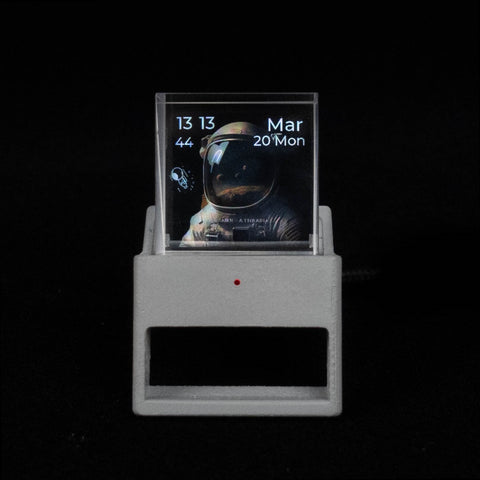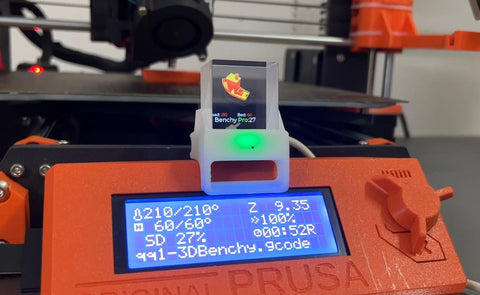1. The Story Behind Holo
In January of this year, we released the first version of Holo.
Why did we create Holo? Initially, we wanted to provide a special screen for Node Pro that could be placed next to a 3D printer to display the model being printed. After implementing the relevant features, we found that this required dependence on Node Pro to better display the correct print data.
We received some suggestions hoping that Holo could be an independent module, making it more flexible for use in various situations. Therefore, we did not continue to force Holo to bind with Node Pro. Based on community feedback, we upgraded some of Holo's features. Thanks to the feedback from the community, Holo has achieved some interesting applications. Today, we will introduce the working principle of Holo and some of the features that have been implemented.
2. Principle and Components of Holo
The principle of Holo mainly relies on a beam splitter prism to refract light at a 1:1 ratio. As shown in the figure below,

a laser beam is emitted from the front of Holo, and after passing through Holo, it becomes two vertical beams of light.

Based on this principle, we placed a 1-inch square OLED screen below the beam splitter prism of Holo so that half of the content displayed on the screen would be refracted directly in front, and the other half would be refracted directly above Holo.
According to the principle of Holo, we can know that the two most important parts of Holo are the beam splitter prism and the OLED screen. In order to give Holo IoT capabilities, we used an ESP32-PICO D4 chip as the OLED driver chip. In addition to driving the OLED to display different content, this chip can also connect to WiFi, manage SD cards, and create a small file system.

3. Introduction to Holo's Features
Holo currently offers two different sets of firmware.
One is based on an SD card and can store more images and videos.
After placing the prepared display content on the SD card, Holo will play the content in the SD card in a loop. This firmware is suitable for using Holo to display works or play your favorite video content.
The other firmware is based on the SPIFS system, using ESP32 flash for file storage, and supports files up to 900KB in size. The main purpose of this firmware is to display time. HoloClock firmware provides nine different clock themes. When connected to WiFi, HoloClock will automatically obtain the time and display it on the screen. It is very suitable to be placed next to your computer desk as a personalized decoration.

4. Introduction to Holo's Open Source Firmware
The firmware compilation of Holo uses the PlatformIO plugin for VS Code.
In addition, the most important library that Holo depends on is lvgl. In our open-source code, Holo relies on a newer version of lvgl (lvgl8.3), which makes it easier to develop cool effects based on Holo.
Currently, the Holo STL Preview firmware and Holo Clock firmware are open source, and you can view the source code and related tutorials here: https://fiber-punk.com/pages/support
If you want to learn more about Holo kits, please refer to this link: https://fiber-punk.com/products/fiberpunk-hologram-butterfly-desksetup-kit
5. The Future of Holo

Holo aims to truly integrate 3D visualization with 3D printers. This requires a joint upgrade of software and hardware. At the same time, the size of Holo will become larger in the future, making it easier to integrate into systems like Klipper and OctoPrint.
